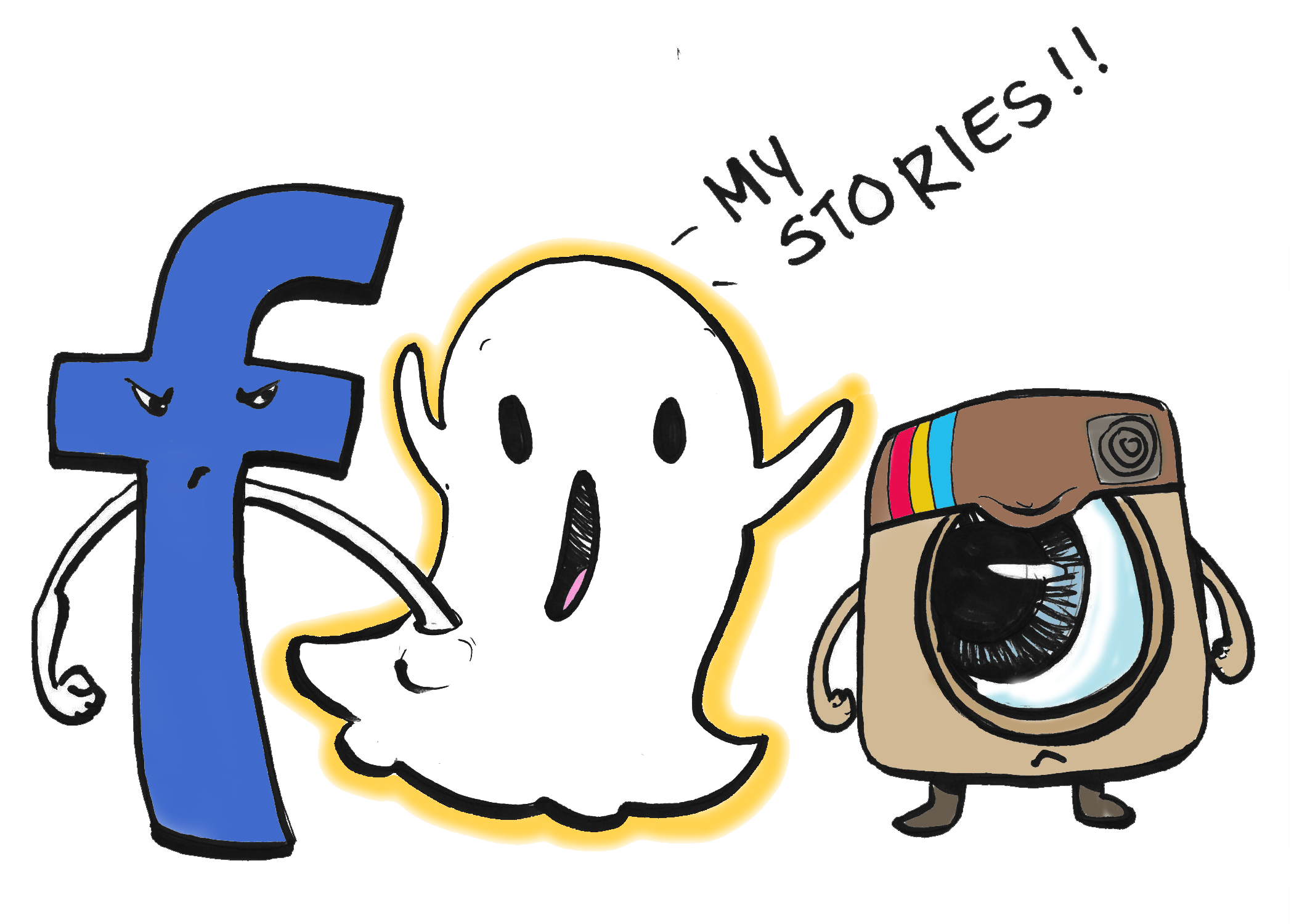Facebook has jumped aboard the “Stories” bandwagon with their recent update, offering the option to post photos and short videos to user’s newsfeeds for 24 hours.
This feature is new to Facebook but the concept itself is far from original. Snapchat started the trend of sharing posts with a limited lifespan in 2012. Instagram picked up on the hype and added a similar feature to their app in 2016. A year later, Facebook has finally added the feature.
The Stories update offers similar features as the Snapchat app. Through the app, users can now send photos and videos to individual friends or directly to their news feeds.
Facebook’s Stories include a wider variety of beautification and themed filters than Snapchat but similar text and sticker adding features. The company has even partnered with film studios to add animated filters that promote upcoming movies such as “Power Rangers,” “Despicable Me 3” and “Guardians of the Galaxy Vol. 2.”
Users don’t have to rebuild their friend or follower count to share their Stories. Since Facebook stories is actually an addition to the existing app, users are automatically able to send their media messages to anyone already on their friends list.
Facebook has also drawn inspiration from Instagram in the way that their app displays users’ Stories. A row of circles with friends’ photos now align the top of users’ news feeds, making Stories impossible to overlook. This is where friends’ stories can be viewed or posted.
Though Facebook has made their new stories feature easy to find, simple to use and a feature that provides more options for photo and video messaging, it seems that Facebook Stories are still coming up short.
Use of Facebook’s Stories feature has been underwhelming compared to the success of Snapchat and Instagram’s similar functionalities.
Many Facebook users who have updated their app still aren’t using the Stories feature. Virginia Wesleyan College students Taylor Anderson and Kaniah Elkerson have Facebook, Instagram and Snapchat, but primarily use Snapchat to share their Stories. “I post on Snapchat about how my day is going,” Anderson said. “I only post when I’m doing something fun,” Elkerson said.
Instagram’s Stories feature, though still not used as often as Snapchat, has also proven more popular than Facebook. Elkerson said that she has only used Instagram Stories while on vacation because it offers better image filters.
Both Anderson and Elkerson are regular Facebook users but they have never intentionally utilized the Stories feature. “I accidentally watched a Facebook Story once,” Elkerson said.
Facebook has already tweaked their Stories function to hide the inactivity of their users. Instead of the empty white space that rested above news feeds when no stories were being posted, Facebook has now created circles to represent friends, even if they’re not posting. When users tap on their friends’ greyed out circles, a message pops up saying they haven’t added to their Story recently even if that friend has never utilized the Story feature.
This ghostly change to Facebook Stories gives the illusion that others on your news feed are using the feature too, creating more incentive for users to actually make posts of their own.
Miranda Fein
mlfein@vwc.edu
(Photo: Val Miller | Marlin Chronicle)



